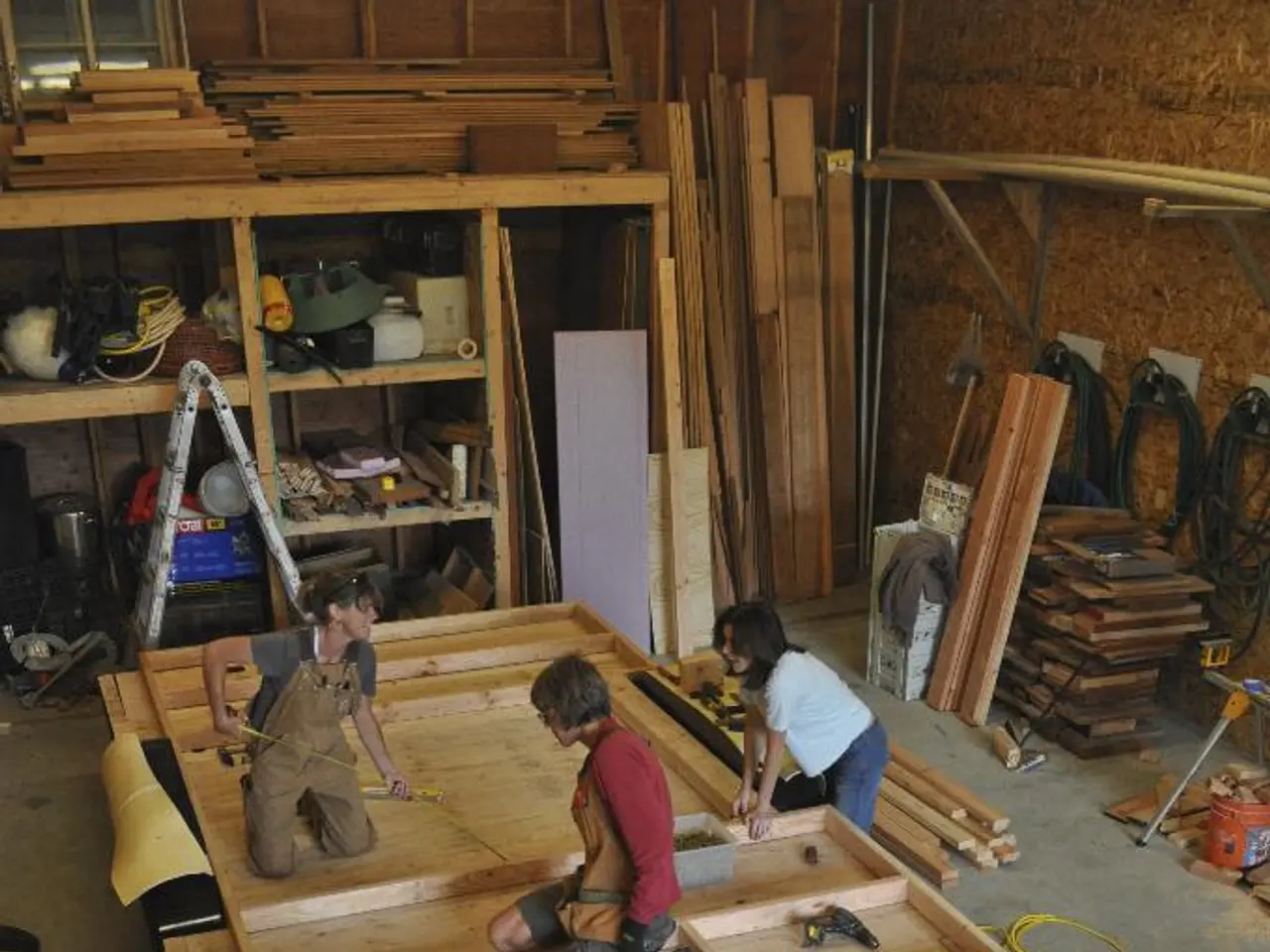Rebuilt Family Tackles Emotional and Spiritual Challenges Together
Building a blended family, especially when one partner brings a child from a previous relationship, can present a unique set of challenges. These challenges often revolve around adjusting to new roles and relationships, communication, and managing complex emotional dynamics.
**Adjusting to New Roles and Relationships** - Children may find it difficult to adapt to a new parent figure, resist changes in household routines, or feel loyalty conflicts between biological and stepparents[5]. - Stepparents often experience "role confusion," unsure whether to act as a disciplinarian, friend, or simply a supportive presence[2]. - Biological parents may feel torn between their new partner and their child, particularly if the child resists the new family structure[1].
**Communication and Conflict** - Differing parenting styles and household rules can lead to disagreements and confusion, especially when children split time between homes[1][5]. - Conflict with ex-partners over co-parenting can create tension and instability, affecting not just the adults but also the children[1][2]. - Unclear boundaries and expectations can lead to anxiety for both children and adults, particularly teenagers who need both autonomy and structure[2].
**Emotional and Social Dynamics** - Feelings of jealousy or resentment may arise if favoritism is perceived, especially between biological and stepchildren[2]. - Financial stress and disagreements can be exacerbated by the complexities of supporting children from previous relationships[1]. - Changes in family traditions and events can be difficult to navigate, particularly when coordinating with multiple households due to custody arrangements[5].
## Evidence-Based Solutions and Strategies
**Open and Honest Communication** - Clarify expectations and boundaries early on to prevent misunderstandings and build trust among all family members[1]. - Create space for everyone to express their feelings and concerns, ensuring that both children and adults feel heard[1][5].
**Establish Clear Structures and Routines** - Develop consistent rules and routines to provide stability, especially important for children navigating two households[1]. - Define stepparent roles carefully: Stepparents should gradually build authority and trust, avoiding either asserting too much control too soon or remaining too passive[3]. - Parent as a team: Presenting a united front helps children feel secure and reduces opportunities for manipulation or division[3].
**Foster Empathy and Patience** - Practice patience and understanding, recognizing that blending a family is a gradual process that can take years to stabilize[1][3]. - Encourage empathy by helping family members see situations from each other’s perspectives, especially during conflicts[1][3]. - Celebrate small wins and progress, rather than expecting instant harmony.
**Address External Factors** - Manage relationships with ex-partners by keeping communication businesslike and child-focused, reducing conflict and anxiety for children[2]. - Seek outside support such as family therapy or counseling when conflicts persist or become overwhelming[1][3].
**Build Unity and Bonding** - Plan activities that encourage bonding and create new family traditions, helping to forge a shared identity[1][5]. - Avoid favoritism by treating all children fairly and acknowledging their individual needs[2].
## Summary Table: Key Factors for Success
| Factor | Description | |------------------------------|-----------------------------------------------------------------------------| | Effective Communication | Open dialogue, clarity of expectations, and emotional expression | | Clear Boundaries & Routines | Consistent rules, defined roles, and stable daily patterns | | Empathy & Patience | Understanding individual perspectives and allowing time for adjustment | | United Parenting | Presenting a cohesive front and collaborating on discipline and support | | External Support | Seeking therapy or counseling when needed, managing ex-partner relationships | | Family Bonding | Creating shared experiences and traditions to build a sense of unity |
## Expert Perspective
> “Conflict is a healthy, if not welcome, part of all marriages; yours is no exception. The only difference for you is that you have more areas of potential conflict and more personalities to soothe in a stepfamily.” [3]
Blended families thrive not by avoiding conflict, but by developing the skills to manage it constructively. Success requires upgraded communication, emotional intelligence, and a willingness to embrace the unique complexities of the new family structure[1][3][5].
In this particular family, the girlfriend starts sharing responsibilities for her boyfriend's son, and she feels like an outsider, wanting to integrate into their dynamic. The matriarchal blended family has a higher chance of divorce due to tensions between husband and wife in child-raising. The girlfriend starts building a bond with the child, and the individual's friend emphasizes that when the child is in their house, both she and her husband are the parents. The individual learns that building an adoptive family is more complex than she imagined. The neotraditional blended family has the highest success rate, characterized by couples who manage stress and challenges well.
- To foster growth and harmony within the blended family, the girlfriend can seek education and self-development resources to understand and navigate family-dynamics more effectively[5].
- Personal growth includes learning to balance personal relationships with her partner, their child, and her own family, streamlining her lifestyle to accommodate the new family structure[5].
- As the blended family evolves, the girlfriend and her partner can leverage opportunities for relationships and personal-growth, ensuring the family dynamics remain smooth and rewarding for all members[5].




